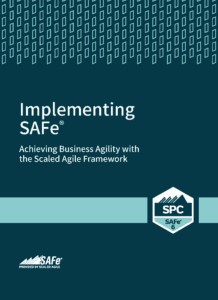In the realm of organizational transformation, establishing a strong guiding coalition is paramount. As John Kotter aptly stated, “A strong guiding coalition is always needed. One with the right composition, level of trust, and shared objective.” This article delves into the significance of this coalition, particularly within the context of the Scaled Agile Framework (SAFe®) implementation, and explores how it contributes to successful change initiatives.
The Critical Role of a Guiding Coalition
When an organization acknowledges the need for substantial change, often triggered by a “burning platform” or the relentless pressures of technological advancements and market shifts, the journey toward transformation begins. John Kotter’s eight stages for guiding organizational transformation, outlined in Accelerate, emphasize the pivotal role of a ‘sufficiently powerful guiding coalition.’
Kotter underscores that in today’s dynamic world, individuals or weak committees often lack the comprehensive information, credibility, and time required for effective non-routine decision-making and inspiring sacrifices for change implementation. Only well-composed teams with strong internal trust can thrive under these circumstances.
 John Kotter's 8-Step Change Model illustrating the importance of building a guiding coalition in organizational transformation
John Kotter's 8-Step Change Model illustrating the importance of building a guiding coalition in organizational transformation
A truly effective guiding coalition comprises:
- Visionary Leaders: Individuals who can articulate the vision, chart the course, and dismantle barriers to change.
- Hands-on Practitioners: Managers and change agents who can translate the vision into tangible process improvements.
- Organizational Credibility: Sufficient standing within the organization to command respect and influence stakeholders.
- Expertise: The collective knowledge and skills to make informed decisions swiftly.
Creating such a powerful coalition requires deliberate action. Within a SAFe implementation, this often begins with developing SAFe Program Consultants (SPCs) as change agents, and is supported by a Lean-Agile Center of Excellence, trained Executives and Leaders, and Leading in the Digital Age.
Developing SPCs as Lean-Agile Change Agents
SAFe Program Consultants (SPCs) typically serve as the primary change agents within enterprises adopting SAFe. These individuals, sourced both internally and externally, bring diverse backgrounds and experiences.
Potential SPCs come from various roles:
- Consulting Partners: Experienced external consultants specializing in SAFe implementations.
- Internal Leaders: Business and technology leaders within the organization.
- Portfolio/Program/Project Managers: Individuals with experience in managing projects and programs.
- Trusted Contributors: Respected individuals with a track record of success and organizational credibility.
Ideally, the change agent community encompasses individuals from different departments, disciplines, and levels of experience. Pairing internal personnel with external SAFe coaches from a Scaled Agile partner is highly recommended. As Destin Sandlin illustrates in the Backwards Bicycle video, “Knowledge is not understanding.” Experienced coaches provide invaluable insights from numerous SAFe transformations, helping organizations avoid common implementation pitfalls.
Implementing SAFe® with SPC Certification: A Deep Dive
The journey to becoming a SAFe change agent begins with the Implementing SAFe® with SPC certification course. This intensive program equips participants with the knowledge and skills necessary to lead successful SAFe transformations.
The course prepares SPCs to:
- Lead enterprise Lean-Agile transformations.
- Implement the Scaled Agile Framework (SAFe).
- Train managers and executives in Leading SAFe®.
- Launch Agile Release Trains (ARTs).
- Identify Value Streams.
- Understand key roles within SAFe.
The first two days of the course provide an immersive overview of Leading SAFe®, preparing participants to teach the Leading SAFe® course and other role-based courses within the SAFe curriculum. The subsequent two days focus on the practical aspects of identifying, planning, and implementing SAFe, providing participants with the necessary briefings, artifacts, and templates.
By completing the course and passing the exam, attendees become certified SPCs, gaining access to valuable resources and online Trainer Enablement plans, enabling them to certify others in Leading SAFe® and other role-based courses.
Scaling Lean-Agile: The Train-the-Trainer Model
To effectively scale Lean-Agile practices across the enterprise, a train-the-trainer model is essential. Scaled Agile, Inc. (SAI) licenses SPCs (both partner personnel and enterprise employees) to conduct SAFe courses internally, offering an affordable training strategy and ensuring an adequate supply of trainers to drive change.
Conclusion: Empowering the Next Moves
Trained SPCs possess the knowledge, skills, and resources needed to educate and train managers, teams, and stakeholders, effectively driving the necessary changes. They become integral to the powerful guiding coalition required for the subsequent critical moves in the SAFe implementation roadmap.
By recognizing the profound importance of creating a powerful guiding coalition and investing in the development of skilled change agents, organizations can pave the way for successful Lean-Agile transformations and achieve sustainable business agility.
Learn More
[1] Kotter, John P. Accelerate. Harvard Business Review Press, 2014.
[2] Sandlin, Destin. Backwards bicycle. https://youtu.be/MFzDaBzBlL0
[3] Knaster, Richard, and Dean Leffingwell. SAFe 5.0 Distilled, Achieving Business Agility with the Scaled Agile Framework. Addison-Wesley, 2020.
